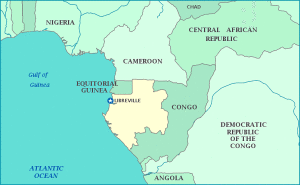
The branding of nations has become an important aspect of cultural and national representation in contemporary times. Countries are eager to attract tourists, students, and workers, stimulate inward investment, and enhance exports. In order to achieve these goals, countries engage in nation branding. The aim of nation branding is to build, conduct, and promote a country’s image. Nation branding concerns a country’s whole image, covering political, economic, historical, and cultural dimensions. At the national level, the concept is multidimensional and context-dependent. There are several key factors that impact upon nation branding: the history and economic conditions of the country, the people of the country and their culture, values and identity, and the general conduct of the country’s citizens overseas.
General Views of Nation Branding
Branding is one of the key points in the literature on trade and the economy, but in recent years, this term has become a central in social studies from the perspective of humanity, governments, countries, cities, some important places and cultures. Globalisation has amplified the importance of branding because of increased competition between countries, international companies, and national and international associations, which have advanced technology, rising prosperity levels and natural resource wealth. (Hansen, 2010). Hence, countries need to represent the difference of their own national brands by demonstrating their social, technological and scientific competencies, and/or their original features that make them stand out from other nation’s products. (Georgescu & Botescu, 2004). The notion of ‘Nation Branding’ has been studied for approximately 10 years (Fan, 2010). Basically, ‘The aim is to create a clear, simple, differentiating idea built around emotional qualities which can be symbolized both verbally and visually and understood by diverse audiences in a variety of situations. To work effectively, nation branding must embrace political, cultural, business and sport activities.’ (Fan, 2008).
Until recently, there had not been an adequate study of nation branding but now, increasing literature on the topic has made it possible to see different perspectives on nation branding. One question that needs to be asked is: What sources does nation branding consist of? At this point, some conceptual confusion is realised in the context of nation branding. Fan (2010) points out that nation branding is composed of four different points: place/destination branding, country of origin, public diplomacy, and national identity.
In place or destination branding, the aim is to create new views and features related to geographical issues, such as countries, cities, towns and historical and tourist places (Hanna & Rowley, 2007). In the era of new global competition, place branding has become a central issue for domestic and external markets because of tourism. Place branding is one of the key factors in trade and industry advertising as they brand themselves with the location of where their institutions or organizations are established. (Dinnie, 2003; cited in: Kotler and Gertner, 2002). Country of origin, in other words, ‘country image as product’, evaluates consumer behaviour in the global arena (Papadopoulos & Heslop, 2002). This type of branding is based on a country as a product and analyses the effect of a product and the service quality on consumer perceptions (Al-Sulaiti & Baker, 1998). Public diplomacy consists of international relations and international communications (Szondi, 2008) by governments through image-building and relationship management (Rasmussen & Merkelsen, 2012). Although public diplomacy and nation branding are consistently used in the same context, they are distinct concepts, albeit they do have some similar characteristics. The common objectives of these concepts are: image promotion, national identity, culture, and values (Melissen, 2005). National identity is created through a state’s historical background and myths, political, cultural and economic events, traditions, historical and tourist sites, geographical location and its citizens, including their cultural characteristics and behaviors. (Smith, 1991).
In conclusion, it seems in fact, that branding needs simplicity and accuracy. A product may be commercialised with a single slogan, but nation branding occupies a very different place because the branding of a nation is too complex and complicated and therefore, it cannot be branded with a single slogan or emblem (Fan, 2010). As Fan also stated, the branding of a nation is dependent on more than one dynamic. Factors such as tourism, industry, and the economy are examples of this. Therefore, branding strategies should be identified by the target group.
References
Al-Sulaiti, K & Baker, M. (1998). Country of origin effects: a literaturereview. MCB University Press. 16 (3), 150–199.
Batey, M (2008). Brand Meaning. London: Routledge. 1-245
Dinnie, K. (2003). Place Branding: Overview of an Emerging Literature. Temple University Japan. 1 (1), 1-10.
Fan, Y. (2008a). Soft power: The Power of Attraction or Confusion. Place Branding and Public Diplomacy, 4:2, 147-158
Fan, Y. (2010). Branding the nation: Towards a better understanding. Macmillan Publishers, Place Branding and Public Diplomacy. 6 (2), 97–103
Georgescu, A and Botescu, A. (2004). Branding National Identity. Lund University. 1-79.
Hanna, S & Rowley, J. (2007). An Analysis of Terminology Use in Place Branding. Palgrave Macmillan. 4 (1), 61-75.
Hansen, R. H.. (2010). The narrative nature of place branding. Macmillan Publishers, Place Branding and Public Diplomacy. 6 (4), 268–279.
Kerr, A. and Jonson, P. (2007), Brand Equity and the Foreign Fan. 15th Congress of the European Association for Sport Management, Torino, Italy.
Kotler, P. and Gertner, D.. (2002). Country as brand, product and beyond: A place marketing and Brand management Perspective. Henry Steward Publication, Brand Management. 9 (4-5), 249-261.
Melissen, J (2005). Beyond the New Public Diplomacy. 3rd ed. Netherlands: Clingendael Publication. 1-34.
Papadopoulos, N & Heslop, L. (2002). Country equity and country branding: Problems and prospects. Stewart Publication. 9 (4-5), 294-314.
Rasmussen, RK & Merkelsen, H. (2012). The new PR of states: How nation branding practices affect the security function of public diplomacy. Public Relations Review, 38 (5), pp. 810-818.
Smith, Anthony D. (1991). National Identity. London: Penguin.
Szondi, G (2008). Public Diplomacy and Nation Branding: Conceptual Smilarities and Differences. Netherlands: Desiree Davidse. 1-52.



